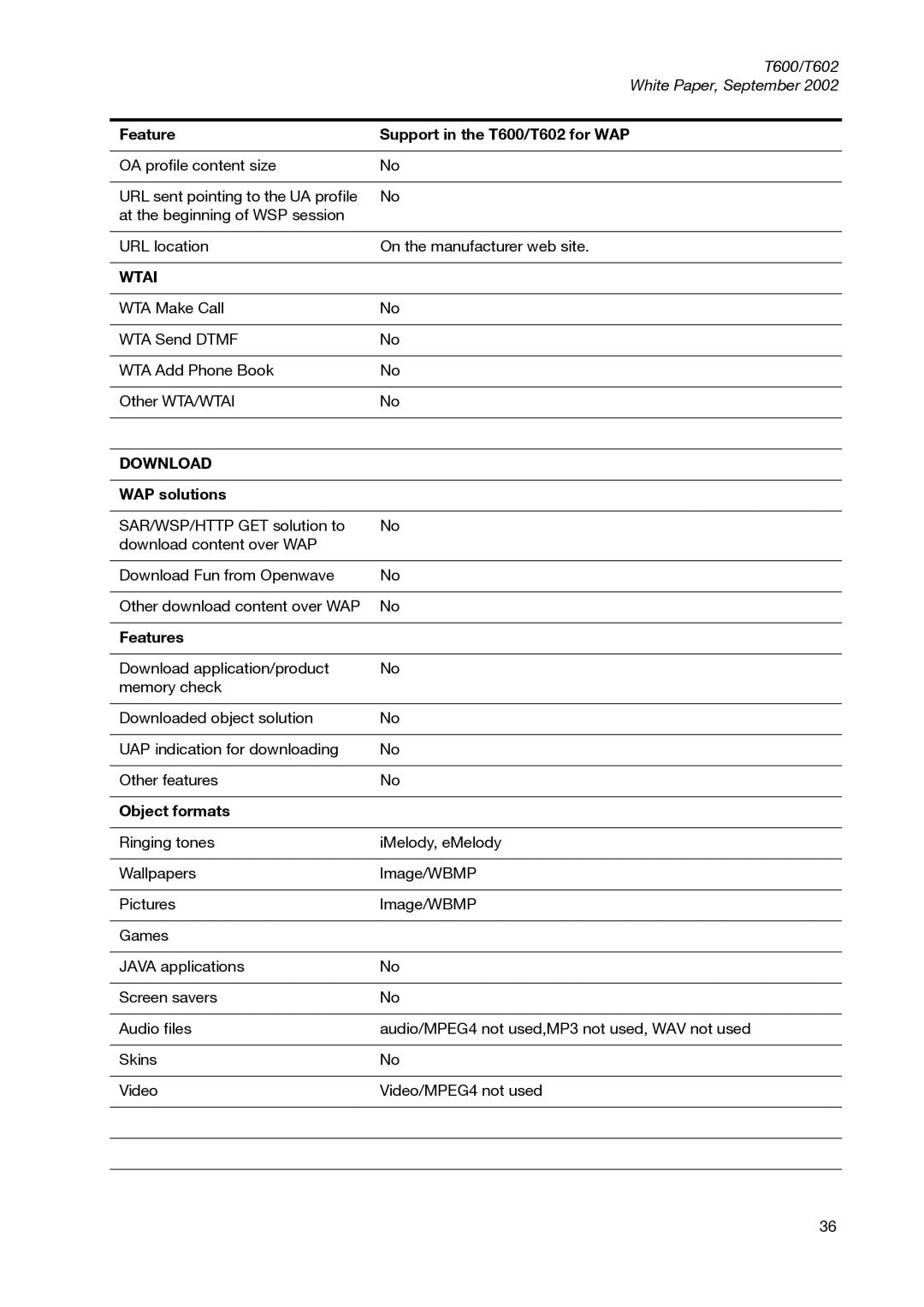T600 specifications
The Sony Ericsson T600 is a notable mobile phone that emerged in the early 2000s, characterized by its blend of innovative features and sleek design. As part of Sony Ericsson's T series, the T600 quickly gained popularity due to its compact dimensions and user-friendly interface, catering to the evolving needs of mobile users at the time.One of the standout features of the T600 was its lightweight construction, weighing in at just 90 grams. This made it one of the more portable options on the market, appealing to users who valued convenience and ease of transport. The phone also boasted a flip design, which not only added an element of style but also helped protect the keypad and screen from accidental damage.
In terms of display, the T600 features a 1.8-inch CSTN screen with a resolution of 101 x 80 pixels. Although modest by today's standards, the display was adequate for the time, offering users clear visibility of their calls, texts, and other functions. The phone supported a range of colors, making it visually appealing to a younger audience.
The T600 was powered by Ericsson's proprietary technology, which allowed for reliable connectivity and voice quality. It was compatible with GSM networks, supporting both 900 MHz and 1800 MHz bands, thereby ensuring coverage in many regions around the world. Battery life was another strong point, with the T600 capable of up to 300 hours of standby time and around 10 hours of talk time, allowing users to rely on their devices for extended periods without frequent recharging.
Additional features included an address book that could store up to 250 contacts, an integrated calendar, and SMS capabilities, enabling users to manage their communications efficiently. The phone also featured a custom ringtone option, allowing users to personalize their device with unique sounds, which was quite popular among teens and young adults at that time.
Overall, the Sony Ericsson T600 encapsulated the essence of early mobile technology, delivering essential features in a compact and attractive package. Its combination of style, functionality, and reliability made it a memorable choice for users seeking a capable mobile phone in the early 2000s. Even today, the T600 remains a nostalgic piece of technology for many who experienced its charm.
